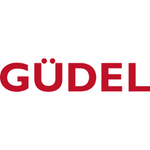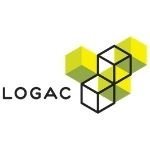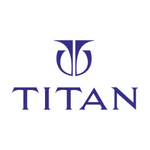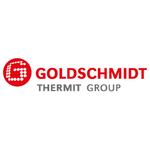Hydrogen fuel is emerging as a key component in the global energy transition, with significant growth anticipated across multiple sectors. As nations aim for carbon neutrality, hydrogen plays a pivotal role in reducing emissions in industries that are challenging to electrify, such as heavy transport and industrial applications. The hydrogen economy is evolving with increasing investments in electrolyser technologies, production capacity, and the development of hydrogen infrastructure. Projections indicate a robust rise in global demand for hydrogen, with a forecasted expansion by 2050 driven by both technological advancements and strong policy support.
In the coming decades, the hydrogen market is expected to experience a dynamic transformation, influenced by regional demand and shifting energy priorities. Key regions, including Europe, Asia, and the Americas, are investing heavily in hydrogen production and utilization, with particular focus on reducing the cost of hydrogen production and scaling up electrolyser technologies. The future of hydrogen will not only depend on advancements in its production but also on strategic investments, technological innovation, and regulatory frameworks that support a sustainable hydrogen economy.
Chapter Summary:
INTRODUCTION
This chapter outlines the report's scope, detailing the global hydrogen industry's coverage, including production, utilization, cost trends, and policy insights. It establishes the framework for understanding hydrogen’s critical role in future energy systems.
Global Hydrogen Demand and Supply Landscape
This chapter provides an overview of hydrogen production by source, usage by region, and forecasts for global demand through 2030 and 2050. It also highlights budget trends for hydrogen and fuel cells, emphasizing regional and global growth patterns.
Electrolyser Technologies and Investment
A detailed analysis of electrolyser manufacturing capacities, installation rates, and investment flows. The chapter discusses advancements in ALK, PEM, SOEC, and AEM technologies and highlights billion-dollar investments shaping the hydrogen economy.
Hydrogen Production and Utilization
Focuses on committed production capacities by 2030, country-specific patent activity, and innovative solutions for production, storage, and utilization. This chapter sheds light on global advancements in hydrogen technologies.
Hydrogen Financing and Policy
This chapter examines hydrogen financing flows from multilateral banks to recipient nations and their impact. It also discusses global employment trends in power generation and key policies influencing hydrogen sector growth.
Hydrogen Cost and Market Trends
Analyzes hydrogen production costs for 2023-2024 and identifies top trends set to shape the market in 2024. This chapter highlights economic factors driving the adoption of hydrogen across industries.
Regional and Sectoral Focus
Explores annual hydrogen budget trends in the Americas, Europe, and Asia-Oceania. It provides a detailed analysis of hydrogen consumption in Europe’s net-zero journey and examines U.S. and global hydrogen production in 2023.
Hydrogen in Transportation and Vehicles
Highlights advancements in hydrogen fuel cell vehicles, key manufacturers, and registration trends. Focuses on South Korea’s hydrogen vehicle adoption from 2017 to 2023, showcasing transportation's evolving role in hydrogen utilization.
Environmental Impact and Future Projections
Examines the environmental benefits of low-emissions hydrogen, COP28 pathways, and green hydrogen production facilities. The chapter also evaluates total hydrogen production capacity by country in 2023, underscoring future sustainability efforts.
Read More
1. INTRODUCTION
1.1. SCOPE AND COVERAGE
2. GLOBAL HYDROGEN DEMAND AND SUPPLY LANDSCAPE
2.1. Global Hydrogen Production by Source, 2023
2.2. Hydrogen Use By Region, 2023
2.3. Global Hydrogen Demand Forecast: 2030 and 2050 by Region
2.4. Hydrogen and Derivatives Demand by Region, Million Tons/Annum (2030,2040, 2050)
2.5. Global Annual Budget Trends for Hydrogen and Fuel Cells
3. ELECTROLYSER TECHNOLOGIES AND INVESTMENT
3.1. Global Electrolyser Manufacturing Capacity (ALK, PEM, SOEC, AEM)
3.2. Electrolyser Installed Capacity GW/yr
3.3. Electrolyser Manufacturing Capacity GW/yr
3.4. Electrolyser Installation Investment Billion USD
3.5. Building the Future of Energy: Billion-Dollar Investments in Electrolyser Technology
3.6. Global Electrolysis Investments: Trends & Sectors (Sep '23-Aug '24)
4. HYDROGEN PRODUCTION AND UTILIZATION
4.1. Hydrogen Committed Production Capacity by 2030, %
4.2. Country-Based Patent Families in Production, Utilization, and Storage Sectors
5. HYDROGEN FINANCING AND POLICY
5.1. Hydrogen Financing Flows: Multilateral Development Bank Sources (Left) and Recipient Nations (Right), 2022-2024
5.2. Global Employment In Power Generation By Sector, 2023
6. HYDROGEN COST AND MARKET TRENDS
6.1. H2 Cost in US 2023-2024
6.2. Top 10 Hydrogen Trends to Witness in 2024
7. REGIONAL AND SECTORAL FOCUS
7.1. Americas Annual Budget Trends for Hydrogen and Fuel Cells
7.2. Europe Annual Budget Trends for Hydrogen and Fuel Cells
7.3. Hydrogen Consumption Required For Europe To Achieve Net Zero By 2050 Vs 2024 European Water Electrolysis Capacity
7.4. Asia Oceania Annual Budget Trends for Hydrogen and Fuel Cells
7.5. U.S. Hydrogen Production, 2023
7.6. Global Hydrogen Production, 2023
8. HYDROGEN IN TRANSPORTATION AND VEHICLES
8.1. Top Vehicle Manufacturers Advancing Hydrogen Fuel Cell Cars
8.2. Total Number of Hydrogen Vehicles Registered In South Korea From 2017 To 2023
9. ENVIRONMENTAL IMPACT AND FUTURE PROJECTIONS
9.1. Estimated Net Global Greenhouse Gas Emissions, 2023
9.2. Global Low-emissions Hydrogen Production and COP28 Pathway, 2030
9.3. Green Hydrogen Production Facility Breakdown by Country in 2022
9.4. Total Hydrogen Production Capacity by Country, 2023
10. FUTURE OUTLOOK
11. APPENDIX
11.1. Research Process
11.2. Author
Read More
















